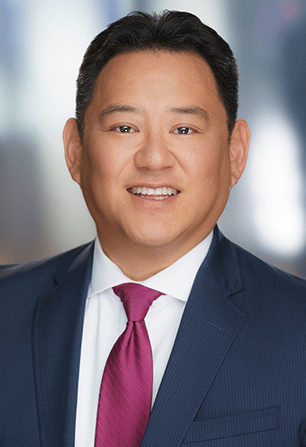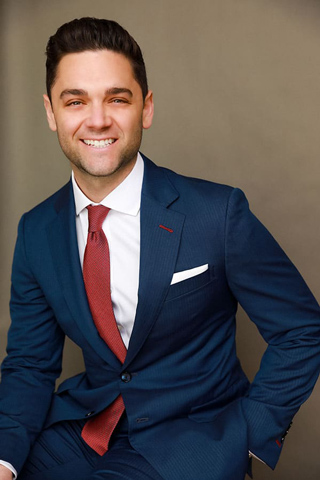What to Do After a Rear-End Collision
A rear-end collision is when a vehicle hits the vehicle in front of it. The most common causes of rear-end collisions are speeding and distracted driving.
Rear-end collision cases are complicated and settling them usually requires an attorney. The legal team at Wilshire Law Firm can help examine your case to determine the appropriate damages that you should be awarded.
Not all rear-end collisions cases are clear cut. While the driver in the back is usually presumed to be at fault, exceptions do exist. If you have been injured in a rear-end collision, you should consult with an experienced car crash attorney right away.
Who Is Liable In A Rear-End Collision in California?
If someone hits you from behind, it is usually always his or her fault, regardless of the reason you stopped. A basic rule of the road requires that you be able to stop safely if a vehicle stops ahead of you. So, as a tailing driver, if you cannot stop in time and wind up rear-ending the vehicle in front of you, you are likely not driving as safely, as you need to be under the circumstances.
Nonetheless, not all rear-end collisions cases are clear cut. While the driver in the back is usually presumed to be at fault, exceptions do exist. If you have been injured in a rear-end collision, you should consult with an experienced car crash attorney right away.
It does not matter whether you were the driver in the front or back – if you want full and fair compensation for your losses, get help from a legal professional who knows how to handle these types of cases.
Contact Wilshire Law Firm today and our dedicated lawyers will help you:
- Prove that the other driver was at fault
- Establish the full extent of your injuries and their costs
- Get more monetary compensation for other damages besides medical bills like lost wages and pain and suffering
- Obtain maximum recovery
California Rear-End Collision Facts
- According to The Washington Post, there are approximately 1.7 million rear-end collisions in the U.S. each year, which account for 23% of car accidents each year according to the National Highway Traffic Safety Administration.
- Out of these accidents, there are approximately 17,000 fatalities and another 500,000 people are injured.
- Furthermore, the National Transportation Safety Board (NTSB) approximates about 80 percent of the fatalities and injuries inflicted by rear-end collisions are preventable with collision avoidance systems, which aren’t available in all vehicles.
- According to the LA Times, a rear-end collision occurs every 17 seconds and a third of all vehicle accidents are rear-end crashes.
- Plus, the Insurance Institute for Highway Safety, an insurance industry trade group, said its research found that automatic braking systems can reduce insurance injury claims by as much as 35%.
- Furthermore, research from the National Highway Traffic Safety Administration indicates rear-end collisions mostly occur in urban areas with speed limits up to 30 miles per hour.
- The NHTSA also claims that the most common injury from rear-end collisions is soft-tissue neck injuries. Although this type of injury is typically not life-threatening, it can cause long-term pain and disability.
- The NHTSA recommends the best way to avoid rear-end collisions is by creating a “safety cushion,” which means maintaining a speed of at least two seconds between each vehicle. This enables each driver to perceive and enact upon a roadway hazard. And, thus ultimately prevent an accident from occurring in the first place. For additional safety measures, when driving in treacherous weather and road conditions, it’s essential to double the safety cushion space between each vehicle.
- The State of California, Department of Motor Vehicle claims, rear-end collisions are the leading cause of death in work zones. Furthermore, most people killed in work zones are drivers and passengers.
Injury Claims for Rear-End Cars Accidents in California
And we will do all this without asking for any upfront fees. We don’t charge for consultations and we don’t ask for a cent unless we make a recovery. So why delay? Call us today toll-free at (844) 979-0933 to receive immediate legal assistance. Let us fight for you.
Whose Fault Was It?
On the one hand, it may be true that a rear-end collision happens usually because the following driver was tailgating or driving distracted. This is why drivers in training are taught to always leave a “buffer” space between them and the vehicle in front to make room for sudden stops.
However, there can be cases where the lead driver was at fault. For example, he or she could have been driving way below the speed limit, which can be just as dangerous as speeding, or he or she could have been driving under the influence of alcohol and/or drugs. Also, reckless driving can be a causal factor, such as stopping without warning in the middle of a freeway.
Potential Value Of Your Claim
Compensation you can claim includes medical bills, income lost during rehabilitation, and the total dollar value of car repairs or replacement. Opposing insurance companies will always try to devalue your injuries and property damage, so you shouldn’t accept any settlement from an insurance company without speaking to an attorney first.
The settlement for a rear-end case varies based upon many factors. Nonetheless, case values are typically estimated based on the following three circumstances including; 1) the amount of damage to your property, 2) the magnitude of the victims injuries, and 3) the insurance coverage of both party’s involved.
We encourage you to contact our firm for a free car accident case evaluation.
How Liability Is Determined
When determining who was at fault in a rear-end accident case, the court may consider various factors, including the following:
- Traffic violations by any of the involving parties
- The involvement of a third party
- Eyewitness statements
- Climate and road conditions
- Whether alcohol or drugs were involved
- Physical evidence, such as skid marks, bumper damage, etc.
The right attorney can help you win the court’s favor by investigating your accident and using the discovered evidence to establish your side of the story.
Our Promise
- All of our case evaluations don’t cost you a cent and come with no obligation.
- We only charge if we win your case.
- We guarantee you’ll receive the state-of-the art medical treatment.
Attorney Bobby Saadian and his team at Wilshire Law Firm have the knowledge and skills to achieve the ultimate results and take-on the largest cases.
With a track record of retaining multi-million dollar settlements, we have become known as the top personal injury law firm in California. We’re devoted to offering superb legal representation to people, who have been injured, due to the negligence of a third party.
Regardless of your situation, we’ll be with you and your family throughout this challenging time. Our objective is not only to win your case but to ensure you achieve the best results.
With offices located throughout California, we’ll meet with you at the most convenient place for you – including your home, the hospital or at our offices.
What Types of Damages Can I Recover?
Economic Damages – these damages are tangible and have a price tag attached to them. Some examples include: short and long-term medical and recovery costs; loss of expected income; loss of essential home services.
Non-Economic Damages – these damages are not concrete and do not have a direct price attached to them. Examples include the following; emotional and mental suffering; and loss of a loved one.
Why Do I Need a Lawyer?
Rear-end collision cases are often complex and require professional intervention in order to properly resolve certain legal issues. The legal team at Wilshire Law Firm can help examine your case to determine the appropriate damages award for you. Contact us now to learn more about the legal services we provide.
Contact A Trusted Rear-End Collision Attorney in California
Contact one of our experienced legal experts today at (844) 979-0933 or you can use the live chat box on our website, it would be our pleasure to assist you with your claim. Or you can send us a message via our online contact form and we will get back to you promptly.
We’ve won more than $900,000,000 in settlements and verdicts since establishing our firm a decade ago. Through our tenacious and unrelenting strategies, we guarantee you will obtain the largest settlement for your case.
Wilshire Law Firm hires engineers to use state-of-the-art technology to enable our clients to benefit from the most innovative research and tools available. The technologies to support your claim consist of:
- High fidelity 3D animated accident reconstruction videos
- Photographs and aerial or Google Earth depictions
- X-rays, medical illustrations and medical models
- Expert witnesses and investigators
Contact our team today so we can help you get the compensation you deserve!











